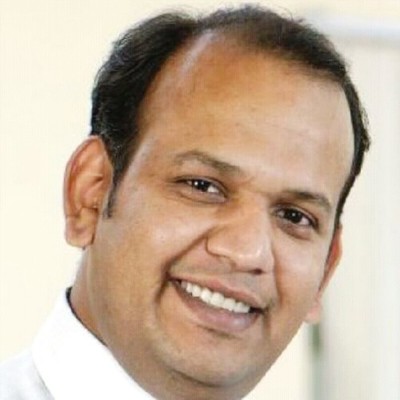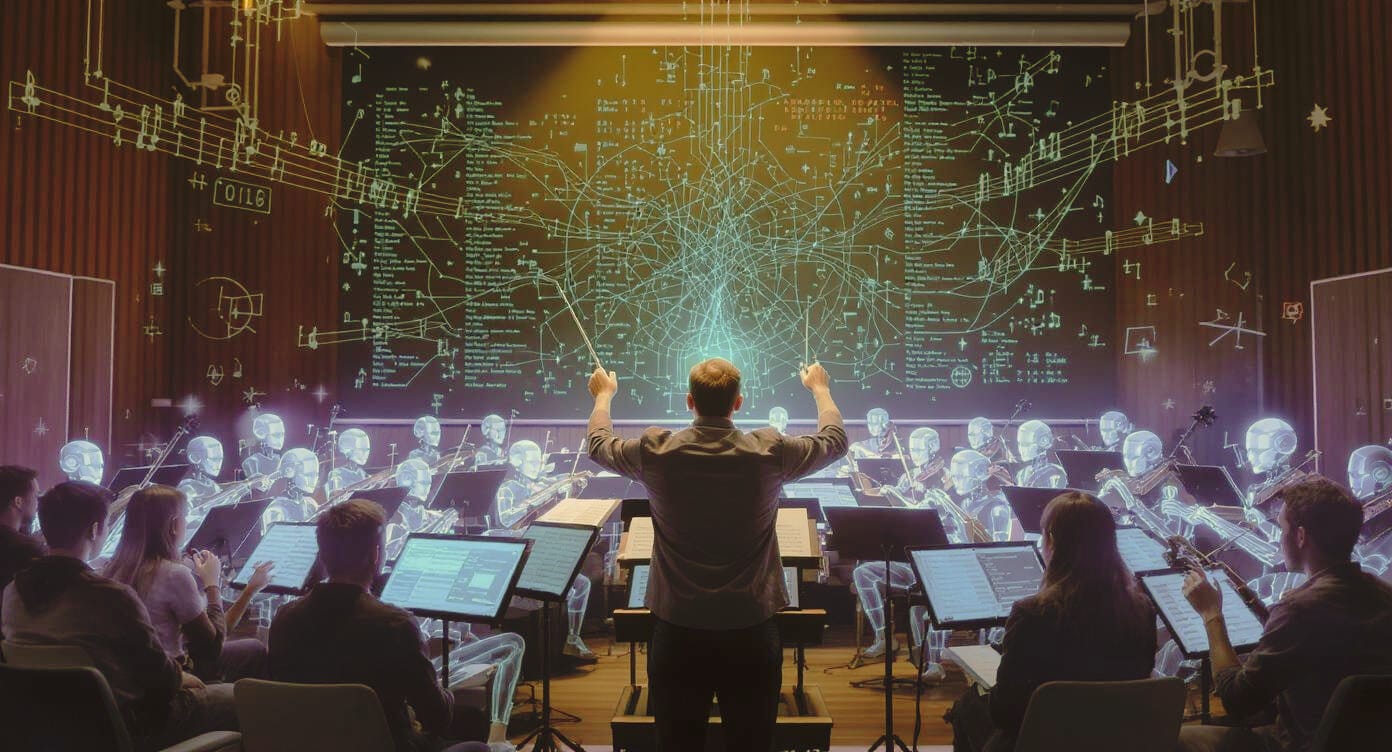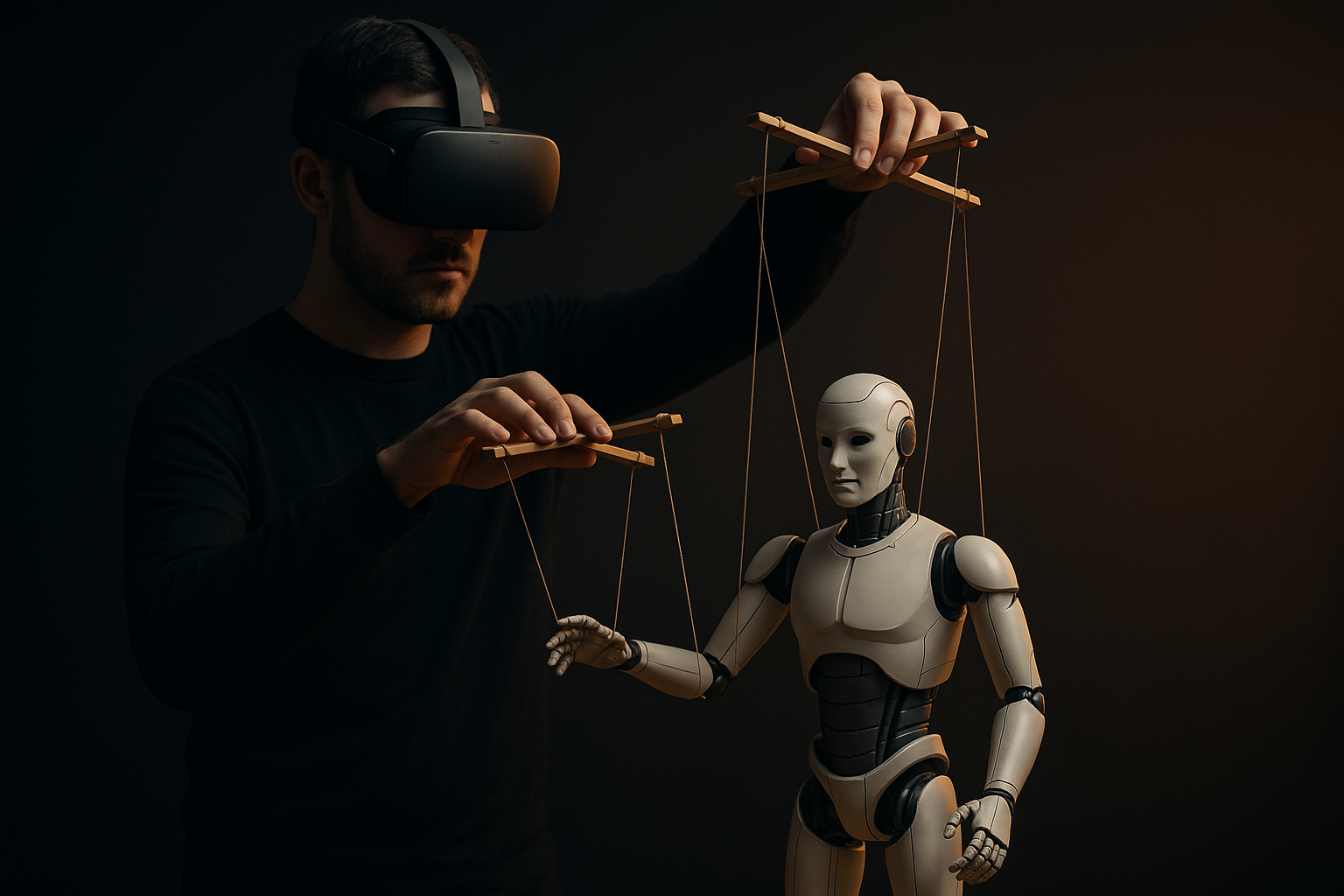THE UNSEEN ORCHESTRA: Teaching Code in the Age of AI's Crescendo


Dr. Sachin Gupta

Prof. (Dr.) Sachin Gupta is the Dean of Research and Innovation at MAIT Delhi, with over 23 years of experience in AI, cybersecurity, and emerging technologies. A published author, patent holder, and Perplexity AI Fellow, he has mentored 13 Ph.D. scholars and co-authored CBSE’s AI textbooks for Classes 9–12. He actively bridges academia and industry through research, innovation, and national-level collaborations.
June 24, 2025






The scent of dry-erase markers still lingers in my classroom, a familiar comfort in a world increasingly defined by the ethereal hum of algorithms. For years, my purpose and that of countless educators like me, was clear: to teach the syntax, the logic, the intricate dance of data structures and algorithms that formed the bedrock of computer science. We instilled the art of problem-solving through elegant code, preparing our students for a future where their lines of Python or Java would orchestrate the digital world.
But the melody is changing. A new, powerful instrument has joined the orchestra: Artificial Intelligence. Suddenly, the very foundations of what we teach are being re-examined, not just by us, but by the students themselves. They come to class, eyes alight with curiosity, but also with a subtle tremor of uncertainty. "Sir," one might ask,"if an AI can write code, what's left for us? Are we just glorified proof readers now? Should I pivot to competitive napping?" It's a question that echoes a broader societal anxiety, a philosophical quandary about the essence of human creativity and utility in a rapidly automating world.
Subscribe now to unlock the full article and gain unlimited access to all premium content.
SubscribeThe scent of dry-erase markers still lingers in my classroom, a familiar comfort in a world increasingly defined by the ethereal hum of algorithms. For years, my purpose and that of countless educators like me, was clear: to teach the syntax, the logic, the intricate dance of data structures and algorithms that formed the bedrock of computer science. We instilled the art of problem-solving through elegant code, preparing our students for a future where their lines of Python or Java would orchestrate the digital world.
But the melody is changing. A new, powerful instrument has joined the orchestra: Artificial Intelligence. Suddenly, the very foundations of what we teach are being re-examined, not just by us, but by the students themselves. They come to class, eyes alight with curiosity, but also with a subtle tremor of uncertainty. "Sir," one might ask,"if an AI can write code, what's left for us? Are we just glorified proofreaders now? Should I pivot to competitive napping?" It's a question that echoes a broader societal anxiety, a philosophical quandary about the essence of human creativity and utility in a rapidly automating world.
The Soul of the Code: Beyond Syntax – Software 3.0
I remember Srishti, a brilliant young woman who always saw the bigger picture. She devoured algorithms, but her true passion lay in understanding why a particular solution was elegant, what humans need it addressed. When large language models (LLMs) like GPT-4 started generating increasingly sophisticated code snippets, Srishti didn't shy away. Instead, she leaned in. "It's like having a hyper-efficient, tireless junior developer," she mused. "But it doesn't know what to build, or why it matters. That's still our job."
Srishti's insight resonated deeply, and it echoes the recent pronouncements from the front lines of AI. As Andrej Karpathy articulated in his recent YC 2025 talk,"Software Is Changing (Again)," we are moving into the era of Software 3.0, where natural language becomes the new programming interface. He calls LLMs "fallible people spirits"—superhuman in some ways, but deeply flawed in others.
This shift isn't about AI replacing programmers; it's about AI elevating the human role. We're moving from being mere coders to being architects of intent, prompt engineers who can articulate complex problems in natural language, and critical thinkers who can discern the subtle flaws or biases inAI-generated solutions. The "how" of coding is becoming increasingly automated, but the "what" and "why" remain profoundly human. The emphasis is returning to computational thinking, to breaking down complex problems into manageable parts, and to understanding the underlying principles that transcend any specific programming language or tool. In a way, using English to direct an LLM to code is a form of programming, but one that demands an even deeper grasp of logic and purpose – a conversation with an incredibly powerful, yet sometimes delightfully quirky, "people spirit."
My Experiments with the Unsolvable
This philosophical shift, underlined by Karpathy's vision of LLMs as a new kind of computer, has led me down fascinating pedagogical paths. If LLMs can churn out boilerplate code, how do we craft assignments that challenge our students at a deeper level, forcing them to engage with the very essence of problem-solving that AI still struggles with? My laboratory became my classroom, and my test subjects, these remarkably intelligent LLMs.
I remember I had already begun designing assignments that exploited AI's current limitations, turning my classroom into a sort of digital gladiatorial arena, pitting human ingenuity against silicon predictability. Imagine the look on an LLM's face if it had a face, when asked to build a system that only runs on Tuesdays, but only if it rained on Wednesday two weeks prior and the stock market went up... in reverse. That's the kind of delightful chaos I was aiming for.
One such assignment involved building a "mood-aware" playlist generator, not just based on tags, but on interpreting subtle nuances in song lyrics and musical structure, requiring a degree of subjective interpretation that current LLMs find elusive. Another was a "legacy code refactoring" challenge, where the "legacy code" was intentionally riddled with logical traps and ambiguous variable names, demanding a human's ability to infer intent and uncover hidden bugs, rather than just optimizing for common patterns. For one particular "legacy" piece, an LLM confidently proposed replacing a perfectly functional (if oddly named) variable with a try-catch block around a console.log() statement, effectively silencing the error message instead of fixing the actual error. It was like handing a highly educated parrot a wrench and hoping it fixes your car. My student, however, through sheer force of will (and a lot of coffee), traced the variable back to a critical database query that had been subtly misconfigured.
The results were enlightening. While LLMs could often generate a basic framework, they consistently stumbled on the truly ambiguous or creatively abstract requirements. My students, however, through trial and error, through frustrated sighs and triumphant breakthroughs, found ways to navigate these murky waters.They debated, they collaborated, they developed an almost intuitive sense of"code smell" that no LLM could yet replicate. They learned to ask the right questions, not just of the problem, but of each other and, yes, even of the AI itself – treating it as a powerful, yet fallible, assistant, much likeKarpathy's "Iron Man suit" analogy, augmenting human capability rather than fully replacing it.
The Human Element: Stories from the Front Lines
Then there's Rohan, who initially felt overwhelmed by the AI revolution. He was a stickler for syntax, for perfect, pristine code. The idea of AI "doing the work"felt like a devaluation of his meticulous efforts. But as he grappled with my "unsolvable"assignments, he found his stride in debugging AI-generated code. He became adept at identifying subtle logical errors, inefficiencies, and security vulnerabilities that AI missed. "It's like being a detective," he told me, eyes sparkling. "The AI gives you a suspect, but you have to find the real culprit. And sometimes," he added with a grin, "the AI's' culprit' is a recursive loop so deep it could qualify for a master's degree in self-deception." Rohan discovered that understanding the fundamental principles of data flow and error handling was more crucial than ever.
And there was Priya, who initially used AI extensively for her basic coding tasks. She found it freeing, allowing her to focus on the higher-level design. But soon, she realized the AI's limitations. When faced with a project requiring true innovation – an algorithm to optimize resource allocation in a highly dynamic, unpredictable environment – the AI could only offer generic solutions. It was Priya's ingenuity, her ability to think outside the conventional frameworks, that led to a novel, efficient solution. She learned that while AI can generate code, it's human creativity that defines its purpose and pushes the boundaries of what's possible, much like a visionary architect instructing a tireless, but uninspired, construction crew.
Where do we stand?
The future of computer science isn't about discarding our past. It's about building upon it, understanding the fundamentals with even greater depth. It's about knowing when to leverage the incredible power ofAI, and when to trust our own human intuition, creativity, and critical thinking. We are not merely teaching students to write code; we are teaching them to be master conductors of an increasingly complex and intelligent orchestra.
The jobs are changing, yes. But the core pursuit of problem-solving, the joy of bringing an idea to life through logical construction, and the profound satisfaction of creating tools that serve humanity – these remain. And perhaps, with AI taking on the more mundane tasks, we are freeing up our students to explore the truly profound and innovative frontiers of computing. It's not a step back to"only DSA"; it's a giant leap forward into a future where human ingenuity, amplified by AI, can achieve remarkable feats. As Karpathy suggests, we are in the "1960s of LLMs"—an exciting frontier where every human programmer, every "vibe coder," has the potential to shape the next era of software. It's about humans learning to dance with the machines, rather than being replaced by them, and occasionally, pulling our hair out when an LLM confidently generates a perfectly valid solution to the wrong problem. But hey, at least we'll have stories to tell.
The scent of dry-erase markers still lingers in my classroom, a familiar comfort in a world increasingly defined by the ethereal hum of algorithms. For years, my purpose and that of countless educators like me, was clear: to teach the syntax, the logic, the intricate dance of data structures and algorithms that formed the bedrock of computer science. We instilled the art of problem-solving through elegant code, preparing our students for a future where their lines of Python or Java would orchestrate the digital world.
But the melody is changing. A new, powerful instrument has joined the orchestra: Artificial Intelligence. Suddenly, the very foundations of what we teach are being re-examined, not just by us, but by the students themselves. They come to class, eyes alight with curiosity, but also with a subtle tremor of uncertainty. "Sir," one might ask,"if an AI can write code, what's left for us? Are we just glorified proofreaders now? Should I pivot to competitive napping?" It's a question that echoes a broader societal anxiety, a philosophical quandary about the essence of human creativity and utility in a rapidly automating world.
The Soul of the Code: Beyond Syntax – Software 3.0
I remember Srishti, a brilliant young woman who always saw the bigger picture. She devoured algorithms, but her true passion lay in understanding why a particular solution was elegant, what humans need it addressed. When large language models (LLMs) like GPT-4 started generating increasingly sophisticated code snippets, Srishti didn't shy away. Instead, she leaned in. "It's like having a hyper-efficient, tireless junior developer," she mused. "But it doesn't know what to build, or why it matters. That's still our job."
Srishti's insight resonated deeply, and it echoes the recent pronouncements from the front lines of AI. As Andrej Karpathy articulated in his recent YC 2025 talk,"Software Is Changing (Again)," we are moving into the era of Software 3.0, where natural language becomes the new programming interface. He calls LLMs "fallible people spirits"—superhuman in some ways, but deeply flawed in others.
This shift isn't about AI replacing programmers; it's about AI elevating the human role. We're moving from being mere coders to being architects of intent, prompt engineers who can articulate complex problems in natural language, and critical thinkers who can discern the subtle flaws or biases inAI-generated solutions. The "how" of coding is becoming increasingly automated, but the "what" and "why" remain profoundly human. The emphasis is returning to computational thinking, to breaking down complex problems into manageable parts, and to understanding the underlying principles that transcend any specific programming language or tool. In a way, using English to direct an LLM to code is a form of programming, but one that demands an even deeper grasp of logic and purpose – a conversation with an incredibly powerful, yet sometimes delightfully quirky, "people spirit."
My Experiments with the Unsolvable
This philosophical shift, underlined by Karpathy's vision of LLMs as a new kind of computer, has led me down fascinating pedagogical paths. If LLMs can churn out boilerplate code, how do we craft assignments that challenge our students at a deeper level, forcing them to engage with the very essence of problem-solving that AI still struggles with? My laboratory became my classroom, and my test subjects, these remarkably intelligent LLMs.
I remember I had already begun designing assignments that exploited AI's current limitations, turning my classroom into a sort of digital gladiatorial arena, pitting human ingenuity against silicon predictability. Imagine the look on an LLM's face if it had a face, when asked to build a system that only runs on Tuesdays, but only if it rained on Wednesday two weeks prior and the stock market went up... in reverse. That's the kind of delightful chaos I was aiming for.
One such assignment involved building a "mood-aware" playlist generator, not just based on tags, but on interpreting subtle nuances in song lyrics and musical structure, requiring a degree of subjective interpretation that current LLMs find elusive. Another was a "legacy code refactoring" challenge, where the "legacy code" was intentionally riddled with logical traps and ambiguous variable names, demanding a human's ability to infer intent and uncover hidden bugs, rather than just optimizing for common patterns. For one particular "legacy" piece, an LLM confidently proposed replacing a perfectly functional (if oddly named) variable with a try-catch block around a console.log() statement, effectively silencing the error message instead of fixing the actual error. It was like handing a highly educated parrot a wrench and hoping it fixes your car. My student, however, through sheer force of will (and a lot of coffee), traced the variable back to a critical database query that had been subtly misconfigured.
The results were enlightening. While LLMs could often generate a basic framework, they consistently stumbled on the truly ambiguous or creatively abstract requirements. My students, however, through trial and error, through frustrated sighs and triumphant breakthroughs, found ways to navigate these murky waters.They debated, they collaborated, they developed an almost intuitive sense of"code smell" that no LLM could yet replicate. They learned to ask the right questions, not just of the problem, but of each other and, yes, even of the AI itself – treating it as a powerful, yet fallible, assistant, much likeKarpathy's "Iron Man suit" analogy, augmenting human capability rather than fully replacing it.
The Human Element: Stories from the Front Lines
Then there's Rohan, who initially felt overwhelmed by the AI revolution. He was a stickler for syntax, for perfect, pristine code. The idea of AI "doing the work"felt like a devaluation of his meticulous efforts. But as he grappled with my "unsolvable"assignments, he found his stride in debugging AI-generated code. He became adept at identifying subtle logical errors, inefficiencies, and security vulnerabilities that AI missed. "It's like being a detective," he told me, eyes sparkling. "The AI gives you a suspect, but you have to find the real culprit. And sometimes," he added with a grin, "the AI's' culprit' is a recursive loop so deep it could qualify for a master's degree in self-deception." Rohan discovered that understanding the fundamental principles of data flow and error handling was more crucial than ever.
And there was Priya, who initially used AI extensively for her basic coding tasks. She found it freeing, allowing her to focus on the higher-level design. But soon, she realized the AI's limitations. When faced with a project requiring true innovation – an algorithm to optimize resource allocation in a highly dynamic, unpredictable environment – the AI could only offer generic solutions. It was Priya's ingenuity, her ability to think outside the conventional frameworks, that led to a novel, efficient solution. She learned that while AI can generate code, it's human creativity that defines its purpose and pushes the boundaries of what's possible, much like a visionary architect instructing a tireless, but uninspired, construction crew.
Where do we stand?
The future of computer science isn't about discarding our past. It's about building upon it, understanding the fundamentals with even greater depth. It's about knowing when to leverage the incredible power ofAI, and when to trust our own human intuition, creativity, and critical thinking. We are not merely teaching students to write code; we are teaching them to be master conductors of an increasingly complex and intelligent orchestra.
The jobs are changing, yes. But the core pursuit of problem-solving, the joy of bringing an idea to life through logical construction, and the profound satisfaction of creating tools that serve humanity – these remain. And perhaps, with AI taking on the more mundane tasks, we are freeing up our students to explore the truly profound and innovative frontiers of computing. It's not a step back to"only DSA"; it's a giant leap forward into a future where human ingenuity, amplified by AI, can achieve remarkable feats. As Karpathy suggests, we are in the "1960s of LLMs"—an exciting frontier where every human programmer, every "vibe coder," has the potential to shape the next era of software. It's about humans learning to dance with the machines, rather than being replaced by them, and occasionally, pulling our hair out when an LLM confidently generates a perfectly valid solution to the wrong problem. But hey, at least we'll have stories to tell.


.svg)



